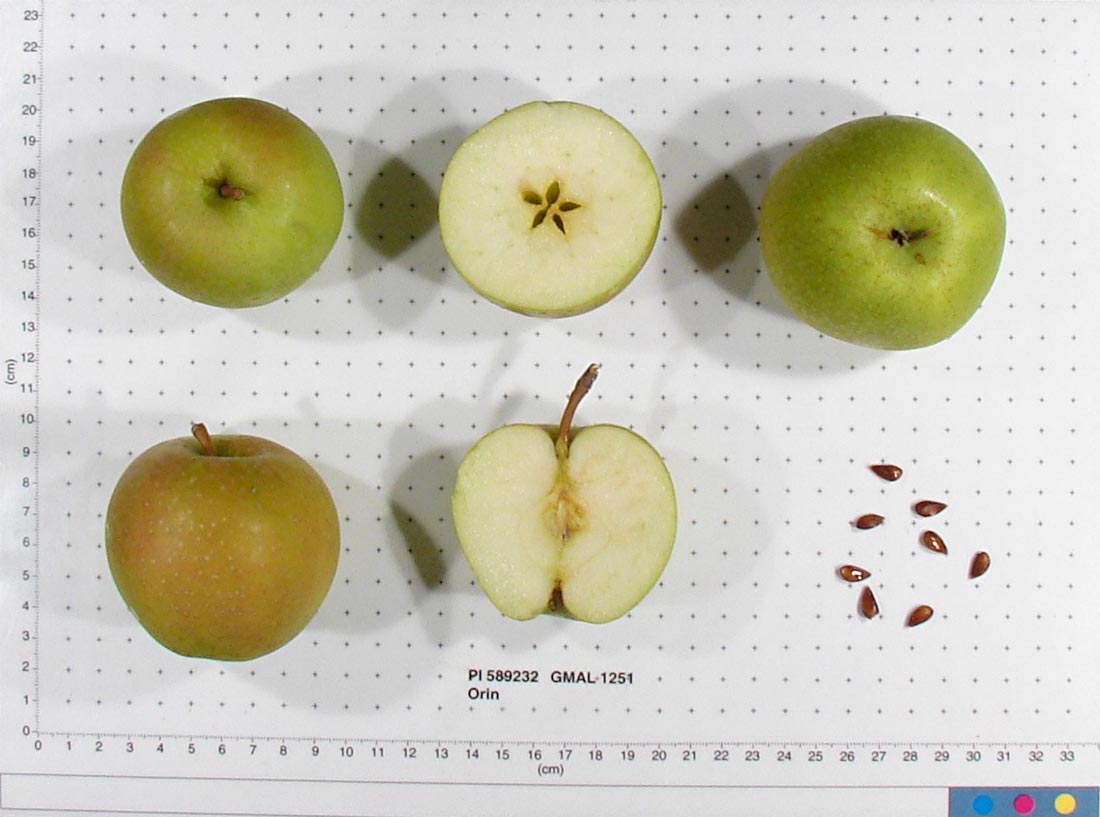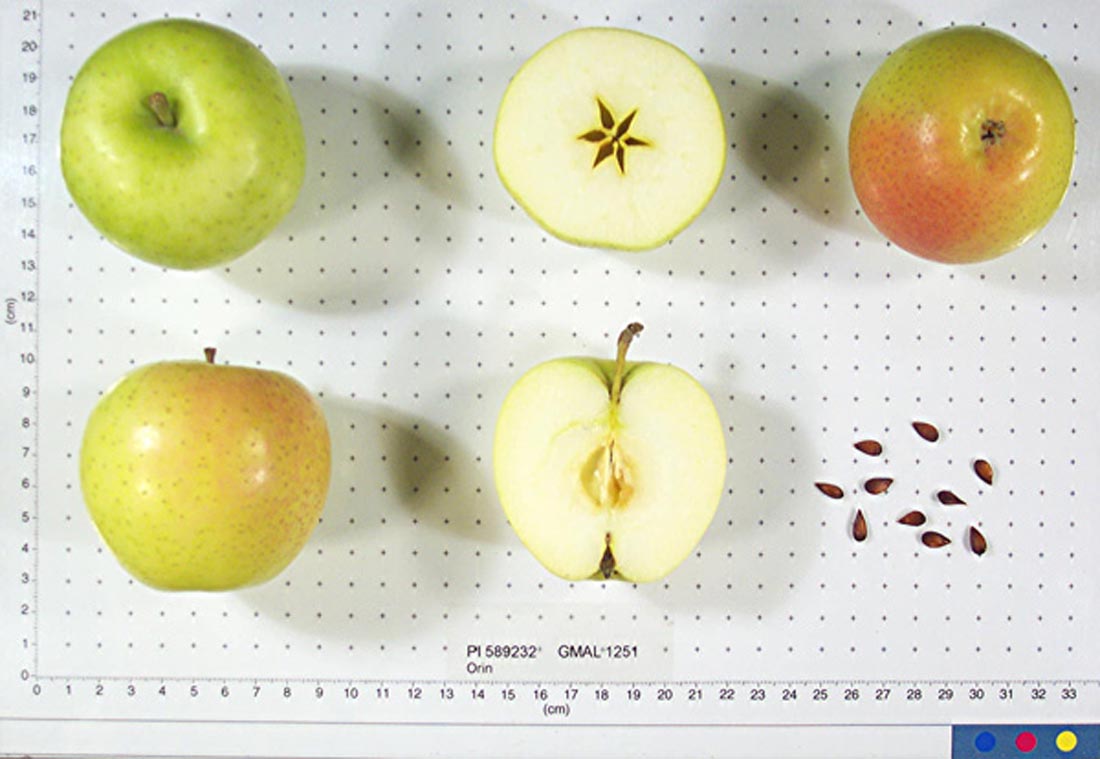Pomiferous
Welcome to the world's most extensive apples (pommes) database.
Information on over 7,000 apples is available here, all carefully researched and provided in a way that is easy to navigate.
Orin
type: Dessert, Eating
synonyms: Sweet Orin, Ohrin, Ourin. Note that there is also an apple named Jumbo Orin .
identification: Medium to large size and round-oblong, sometimes ovate, in shape. Pale green to yellow with a faint brownish red blush on the sun exposed face. Lenticels are abundant, medium large, russetted and protruding, giving the surface a rough feel. The calyx is small and closed, occasionally partly opened, and set in a shallow basin which is surrounded by a faintly knobbed crown. The stem is long to very long and stout, set in a medium deep, narrow cavity that can lightly to extensively russetted.
characteristics: The flesh is cream-coloured, firm, crisp, juicy and sweet (some years very sweet) with a honeyed flavour that has been described as pear-like with hints of pineapple. Almost no detectable acid yet the flesh resists browning when exposed to air. In poor growing conditions, the apple can be watery with only mild sweetness and almost no flavour.
uses: A supermarket apple intended for eating fresh. Can be used in salads for sweet and crunchy element.
origins: Developed by Tadanosuke Otusk, an independent apple breeder at Kuwaori, Fukushima (Japan). This was one of several seedlings grown at the Aomori Apple Experiment Station near Kuroishi City, Japan, in 1948 from a cross pollination of Golden Delicious and Indo . Another of the seedlings from this experiment became the popular Mutsu (Crispin) apple.
cold storage: Keeps up to four months in cold storage.
vulnerabilities: Highly susceptible to brown rot.
harvest: Ready for harvest during the early part of the sixth period.
pollination group: B
pollination peak: 5
ploidism: Diploid. Self sterile.
cold storage weeks: 16
harvest period: 6
Donate a cider?
©2016-2021 Pomiferous.com. All rights reserved

